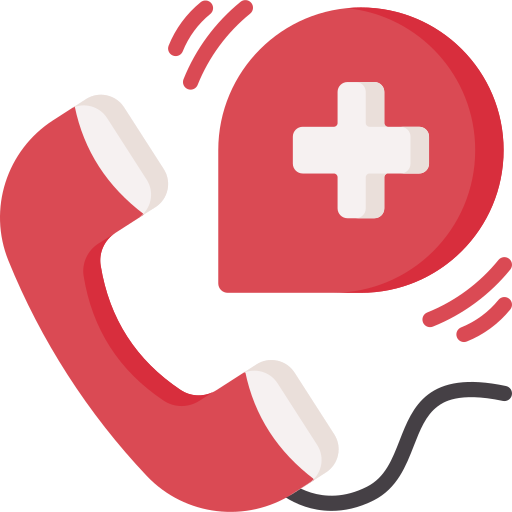Part A Vocabulary
Learn the vocabulary and idioms related to the topic, and describe the picture.
We’ll read aloud the words and expressions below. Please repeat after me. I will check your pronunciation.
(Please send the mispronounced words and expressions to your student.)
講師の真似をして単語を発音しましょう。

|
relate
関連する、関係がある
|

|
rapidly
急速に、迅速に
|

|
indicate
示す、指摘する
|

|
stay in contact with ~
~と連絡を保つ
|

|
practical
日常の、実用的な
|

|
emergency
緊急の
|
Now, let’s review some words from part A_2.
(Please review the mispronounced words and expressions from part A_2.)
復習しましょう。
Part A_5 Picture description
Now, please look at the picture below. Give the three actions that you see in the picture.
以下の写真を見てください。3人の人物が何をしているか描写してみましょう。
Part A_6 Picture description
Part A_7 Picture description
Part A_8 Picture description
Now, let’s review your answers.
Please review your student’s answers by sending the correct answers in complete sentences. After that, ask your student to read aloud his or her corrected answers.)
復習しましょう。
Part A_9 Picture description
Part B Passage reading
Read sentences and check your pronunciation. Make sure you understand the content.
You will read aloud the passage below. I will check your pronunciation and intonation.
(Please send the mispronounced words and expressions to your student.)
文章を読みましょう。
You and your smartphone – Who’s in charge?
Smartphones are changing our lives, but not always for the better.
In Japan, the number of smartphone owners has been rising rapidly. Only 14.6% of the total population used smartphones in 2011. But by 2018, the number had increased to 64.7%. Japanese teenagers spend 143 minutes a day using smartphones for the Internet. Meanwhile, people in their 20s spend 129 minutes on the same purpose. These numbers indicate that we now live in a new culture where the digital world meets the real world.
Smartphones have changed the way we relate to people. Texting, social media, emailing, and video chatting help us stay in constant contact with our friends and families, even if they live far away from us.
We can also watch movies or listen to music whenever we want. Smartphones also have practical services. We do not need to go to a bank to do our banking business. Police officers and firefighters can immediately find where their help is needed in an emergency. We can also use our smartphones as a map, to call a taxi, or to check prices.

Now, let’s review some words and sentences from part B_2.
(Please review the mispronounced words and sentences from part B_2.)
復習しましょう。
Part B_5 Comprehension questions
I will ask the following questions. Please answer based on the passage. I will check if your sentences are complete and if the grammar is correct.
講師が以下の質問をします。読んだ内容をもとに答えましょう。
Part B_6 Comprehension questions
| 1. |
In 2011, what percentage of the total population of Japan used smartphones? |
Part B_7 Comprehension questions
Part B_8 Comprehension questions
| 2. |
How long do Japanese students use their smartphones for the Internet each day? |
Part B_9 Comprehension questions
Part B_10 Comprehension questions
| 3. |
How can smartphones help us stay in constant contact with our friends and families? |
Part B_11 Comprehension questions
Part B_12 Comprehension questions
Now, let’s review your answers.
(Please review your student’s answers by sending the correct answers in complete sentences. After that, ask your student to read aloud his or her corrected answers.)
復習しましょう。
Part B_13 Comprehension questions
Part C Fill in the blanks
Fill in the blanks with the correct words/phrases to complete the sentences.
Part C_1 Fill in the blanks
Please choose a word/phrase to complete each sentence. Then, read aloud the sentences.
言葉を選んで文章を完成させましょう。そのあと音読しましょう。
Part C_2 Fill in the blanks

| 1. |
Let’s __________ each other.
|
| 2. |
The internet _________ entered our lives in the 1990s, bringing about significant changes.
|
| 3. |
The Fire Department received an __________ call. |
Part C_3 Fill in the blanks
Now, let’s review your answers.
(Please review your student’s answers by sending the correct answers in complete sentences. After that, ask your student to read aloud his or her corrected answers.)
復習しましょう。
Part C_4 Fill in the blanks
Part D Q&A
Answer the questions and check your grammar. Make sure you understand the content.
Please answer the following questions. I will check if your sentences are complete and if the grammar is correct.
講師が質問しますので答えましょう。

| 1. |
What do you use your smartphone for? |
| 2. |
What do you think are the good and bad points about smartphones? Why? |
| 3. |
When and what do you use the internet for besides staying in contact with your family and friends? |
| 4. |
Do you think Japanese teenagers spend too much time on their smartphones? Why or why not? How about you? |
Now, let’s review your answers.
(Please review your student’s answers by sending the correct answers in complete sentences. After that, ask your student to read aloud his or her corrected answers.)
復習しましょう。
Part E Free talk
Talk about the following topics.
Let’s do a free talk about the following topics.
(Please do a free talk if you have time left.)
フリートークをしましょう。
| 1. |
If you lost all internet access, what would you be most worried about? How would you deal with the situation? |
| 2. |
Which do you enjoy more, spending time with your smartphone or doing other things? Why? |


















































